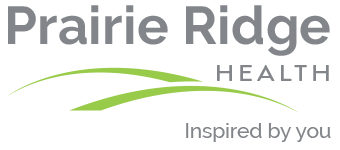Take the proper steps to prepare - visit Do1Thing.com
Taking the proper steps to prepare for disaster doesn’t have to be overwhelming. It can be done over time in 12 easy steps.
Karen Sell, RN and Emergency Preparedness Chairperson at Prairie Ridge Health, asks that community members and businesses visit Do1Thing.com. Do 1 Thing is a non-profit organization that wants to help build stronger communities. The website offers a 12-step program, with one step to complete each month, in an effort to prepare individuals, businesses, and communities for all hazards and to become disaster resilient.
For questions, please visit Do1Thing.com, or contact Sell at ksell@prairieridge.health.
For the month of May, Do1Thing.com offers this step:
Goal for May: Make sure the people who count on you are prepared for a disaster.
Make sure emergency procedures are in place for your workplace or school.
Talk to your employer about emergency plans for the building where you work. Think about other places that you and family members regularly spend time, like your child’s school. Talk to administrators at those places about their emergency plans as well.
Ways to be safe at work and school:
- Make sure evacuation routes and tornado shelter locations are marked on a map and posted in the building.
- Hold emergency training and drills.
- Help create an emergency kit for the facility.
- Know where fire extinguishers and Automatic External Defibrillators (AEDs) are located.
Give emergency kits to people who count on you (college students, elderly parents, etc.).
Put together basic emergency kits for people who may not be able to do so for themselves or for those who may not think of doing it for themselves. Show them what is in the kit and talk to them about disasters.
Make sure the kit meets their specific needs. For instance, if someone takes prescription medicine, include a list of medications and dosages. For a college student, make sure the kit is small enough to store in the space they have available.
College Students
Talk to your college student about how you will stay in touch if a disaster occurs. Make sure they understand that cell phones may not work during a disaster. Choose an emergency contact who does not live near you or the college. Arrange with your student to call that person if they can’t reach you during a disaster.
Visit the website for your student’s college to find out about the school’s disaster plans and procedures. Some colleges will provide a phone number that you can call in an emergency. If you don’t find the number on the website, call the admissions office and ask. Add the number to your emergency contact list. Make sure your student knows to call you if there is an emergency on campus. Also, ensure your student is registered for any emergency notification system on their campus.
Insurance
Talk to your insurance agent to find out if your policy covers your student’s belongings while they are away at school. You may need to buy an additional renter’s policy. Also check with your health insurance carrier to find out where your student can find covered healthcare at school.
Know how others in your community will respond in a disaster.
Talk to other people when you are developing an emergency plan for a school, workplace or organization. Get input from people who work there and other people who use the building. It is especially important to include people with disabilities. Think about asking your local police and fire departments to review the plan. Make sure that what you are planning won’t interfere with emergency response.
Find out if your community has designated evacuation routes for floods, hurricanes, or other disasters. Include that information in your plans. Make sure that the plans you develop will work for everyone.

